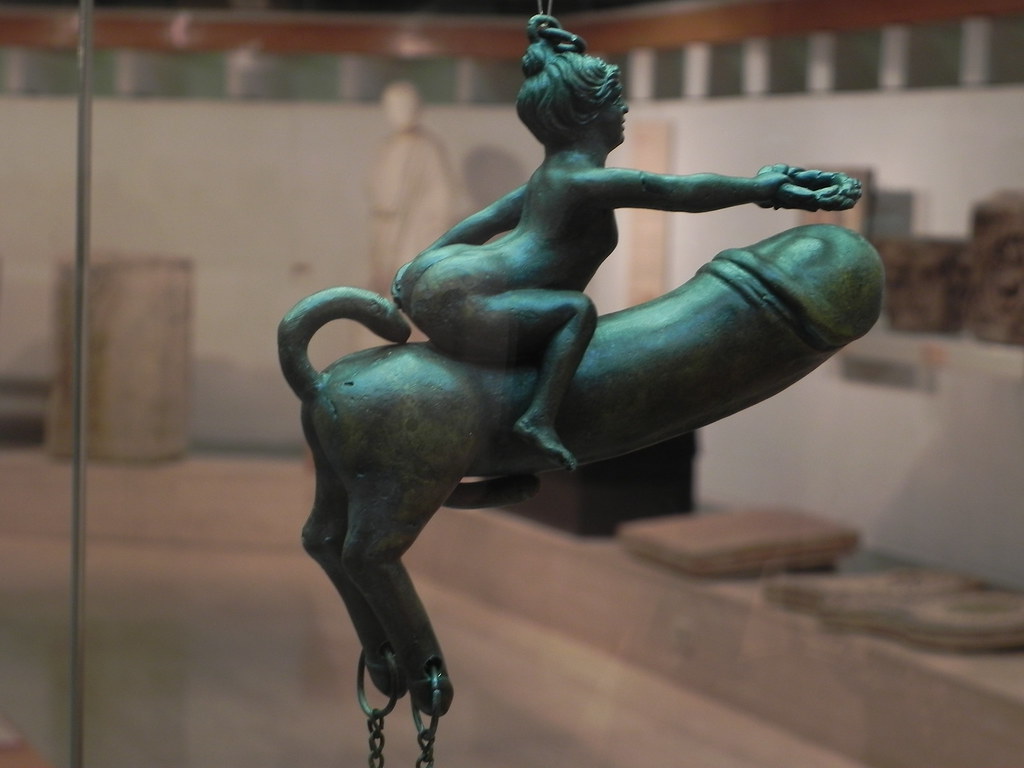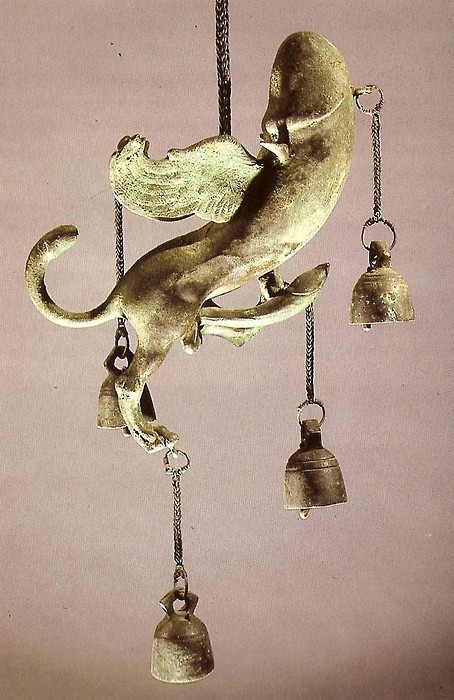Ancient Roman Tintinnabulum: A Sign of Fertility, Power, and Good Fortune

In the vibrant tapestry of ancient Roman culture, the Tintinnabulum emerges as a fascinating symbol of both superstition and spirituality. This unique artifact, often overlooked amidst the grandeur of Rome’s architectural marvels and monumental sculptures, holds within its form a rich tapestry of beliefs and customs that were deeply ingrained in the daily lives of Roman citizens.

At its essence, the Tintinnabulum was a wind chime or assemblage of bells, designed to produce melodious tones when stirred by the gentle caress of the breeze. Yet, its significance extended far beyond mere auditory pleasure. The Tintinnabulum served as a talisman of protection and prosperity, believed to ward off the malevolent influence of the evil eye and usher in good fortune and fertility.
What sets the Roman Tintinnabulum apart from other decorative objects of its time is its distinctive form. Often fashioned in the likeness of a phallus, the Tintinnabulum embodied the ancient Roman reverence for symbols of power, luck, and fertility. This association with the phallus was deeply rooted in the Roman belief system, which held that virility and vitality were essential for the well-being of both individuals and society as a whole.

Furthermore, the Tintinnabulum’s connection to the fascinum—a magico-religious phallus believed to possess protective qualities—further underscored its importance in Roman society. The fascinum was revered as a potent symbol of warding off evil forces and ensuring the continued prosperity of the community. Thus, the Tintinnabulum, with its phallic form and melodic tones, served as a physical embodiment of these beliefs, providing a tangible link to the supernatural realm.

One such example of a Roman Tintinnabulum can be found in the form of a bronze ithyphallic figure dating back to the 1st century AD, discovered in Sesamón, Burgos, Spain. This exquisite artifact not only exemplifies the intricate craftsmanship of ancient Roman artisans but also offers a glimpse into the spiritual and cultural practices of the time.
As we reflect on the significance of the Roman Tintinnabulum, we are reminded of the enduring power of symbolism in human society. Despite the passage of centuries, the beliefs and customs embodied in this humble wind chime continue to resonate with us today, serving as a poignant reminder of the timeless quest for protection, prosperity, and fertility.











